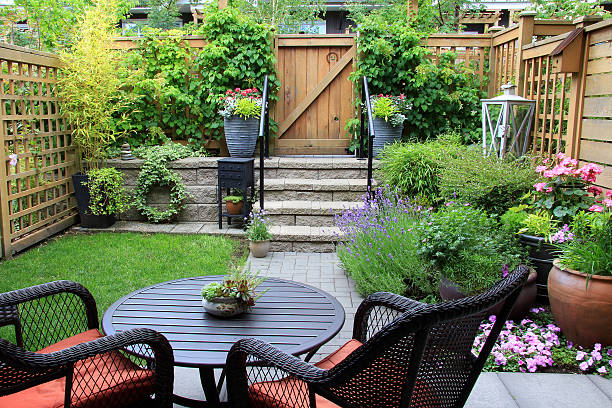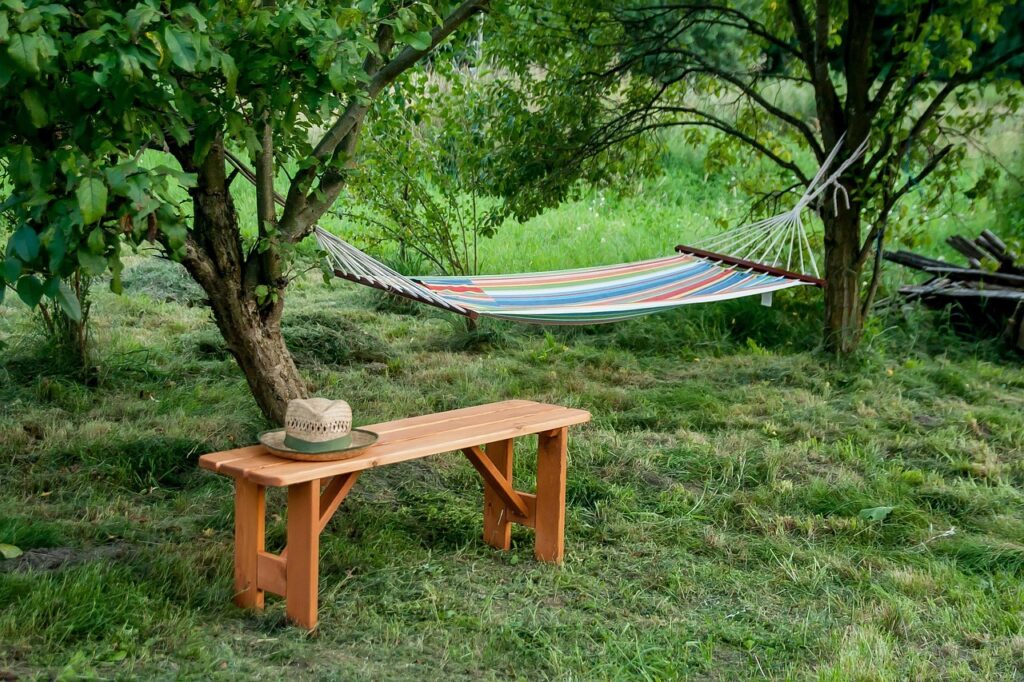A Quick Personal Note
I didn’t set out to become “that neighbor with the tomato jungle.”
In April 2022 my backyard was a sun-baked rectangle of neglected lawn and a single, heroic dandelion. Then grocery prices spiked, my back rebelled against lifting supermarket produce crates at my part-time job, and I thought, “Could I—city kid, zero green thumb—grow at least some of my own food?”
Fast-forward two seasons and I’m trading zucchini for home-roasted coffee with the folks next door. I still botch things (RIP, first-year eggplant), but the spills—and thrills—of those early months shaped the step-by-step system below. Use it as a map, sprinkle in your personality, and I promise the dirt under your nails will feel more like a badge than a mess.
Table of Contents
- Dream & Measure
- Scout the Perfect Spot
- Pick a Garden Style
- Test & Nourish Your Soil
- Design Beds & Paths
- Stock Your Tool Belt
- Choose Foolproof Plants
- Planting Day: Step-by-Step
- Water, Mulch & Feed
- Pests, Weather & Ongoing Care
- Seasonal Checklist & Next Steps
1. Dream & Measure
The best gardens begin in imagination, not at the big-box seed rack. I spent one rainy Saturday sketching dream beds on graph paper—then pacing the yard with a tape measure to see what was actually possible.
- Kitchen wish list: Salsa ingredients? Salad bar? Herb tea corner?
- Reality check: How many square feet could I realistically maintain between work and family?
- Rule of thumb: One 4 × 8 ft bed can supply a couple with weekly salads all summer. Bigger ambitions need more beds or vertical tricks.
2. Scout the Perfect Spot
I tracked sunlight hourly with sticky notes on the patio door. Turns out the northwest corner basked in 7+ hours, while the center dipped below five thanks to a neighbor’s oak. Lessons:
- Sunlight: 6–8 direct hours for fruiting crops (tomatoes, peppers); 4–6 is fine for leafy greens.
- Water: The closer to a spigot, the more faithful you’ll be—trust me.
- Drainage: After heavy rain, ponds are for ducks, not carrots.
- Visibility: Beds I can see from the kitchen get weeded. Hidden corners… not so much.
3. Pick a Garden Style
My clay soil was brick-hard, so I chose raised beds. Here’s the cheat sheet I wish I’d had:
| Style | Pros | Cons | Best For | Deep Link |
|---|---|---|---|---|
| In-Ground Rows | Cheapest | Heavy weeding | Big yards, good soil | In-Ground vs. Raised Beds |
| Raised Beds | Warmer soil, back-friendly | Lumber cost | Clay soils, small yards | Raised Garden Bed Guide |
| Containers/Patio | Portable, decor | Frequent watering | Renters, balconies | Container Gardening 101 |
| Vertical/Trellis | Maximizes yield per sqft | Upfront trellis build | Tight spaces | Vertical Veggies Blueprint |
I built two 4 × 8 cedar boxes 18 in deep over one sun-soaked weekend with my kids—bonus family bonding.
4. Test & Nourish Your Soil
“Plants eat dirt” is a lie. They eat nutrients dissolved in water… inside dirt. My first test kit revealed pH 5.5 (too acidic) and low phosphorus. I added garden lime plus triple-washed mushroom compost, retested, and voilà—6.4 pH and balanced macros.
Starter recipe (per 4 × 8 × 1 ft bed):
- 6 cu ft screened topsoil
- 6 cu ft compost (blended leaf + manure)
- 2 cu ft coconut coir for springiness
- 1 cu ft coarse perlite for drainage
- 2 cups organic 5-5-5 fertilizer
5. Design Beds & Paths
I laid garden hoses on the lawn to visualize flow—then tripped over them for a week to confirm comfort. Tips:
- Bed width: ≤4 ft so you never step inside.
- Path width: 18 in for feet; 30 in if you’ll push a barrow.
- Orientation: North–south beds bathe evenly; east–west may shade themselves.
- Access: Leave gate-wide gaps between fences and beds for mowing.
6. Stock Your Tool Belt
I learned the hard way that bargain tools bend—mine snapped mid-dig, landing me in urgent care for a tetanus booster. Save drama:
- Must-haves: Sharp hand trowel, digging fork, bypass pruners, 50 ft hose with shut-off valve, kneeling pad.
- Nice-to-haves: Hori-hori knife, drip irrigation kit, collapsible harvest basket, wheelbarrow (mine doubles as toddler ride).
- Tool TLC: Spray metal with WD-40 end of season; sand & oil wood handles.
7. Choose Foolproof Plants
Know Your Zone
I’m USDA Zone 8b—searing summers, mild winters. You can find yours in 30 seconds on the USDA map; it dictates last-frost dates and heat tolerance.
My First-Year All-Star List
| Crop | Why It Rocks | Planting Method |
|---|---|---|
| Lettuce mix | Fast (30 days), cuts regrow | Direct seed |
| Bush beans | Compact, prolific | Seed after frost |
| Zucchini | Almost impossible to fail | Transplant or seed |
| Cherry tomatoes | Continuous harvest | Buy sturdy starts |
| Basil & parsley | Pest-repelling understory | Seed or starts |
| Marigolds | Nematode control, color punch | Seed along edges |
I resisted exotic dragon fruit until year two—wise choice.
8. Planting Day: Step-by-Step
- Moisten soil the night before; damp, not soupy.
- Lay out seedlings (still in pots) to test spacing.
- Dig holes level with pot depth; bury tomatoes deeper (stem roots).
- Root tickle: Tease circling roots so they reach outwards.
- Backfill & firm gently—air pockets kill.
- Water in with a diluted fish-emulsion tea (smells like low-tide but feeds roots).
- Label rows: I use cut-up yogurt tubs + Sharpie; rainproof for a season.
9. Water, Mulch & Feed
Water
- Target: 1 in per week (rain counts) on established beds.
- How: I installed a $35 drip-line kit—uses 40 % less water than sprinklers and keeps foliage dry (bye, mildew).
- When: Dawn. Evenings invite slugs.
Mulch
Two wheelbarrows of shredded leaves cut my weeding by 80 %—and the neighborhood bagged leaves for free curbside.
Feeding
- Leafy crops: Side-dress compost mid-season.
- Fruit crops: Liquid seaweed + molasses every three weeks.
10. Pests, Weather & Ongoing Care
Pest Patrol
I do a five-minute Tuesday Scout: flip leaves, inspect stems, pluck pests early. Saved my kale from cabbageworms.
- Row covers: Lightweight fabric created a “bug force field” over brassicas.
- Beneficial bugs: Dill and yarrow invited ladybugs that curbed aphids.
- Last resort: Neem + insecticidal soap, evening only (spares bees).
Weather Woes
- Heatwaves: Shade cloth propped on PVC hoops dropped bed temps by 10 °F.
- Late frosts: Old bedsheets + thrift-store tomato cages.
- Hailstorms: An overturned patio table shielded peppers—a weird sight, but it worked!
11. Seasonal Checklist & Next Steps
| Season | Tasks | My Personal Notes |
|---|---|---|
| Early Spring | Soil test, compost tip-in, seed onions indoors | My excitement peaks; patience plummets. |
| Late Spring | Transplant tomatoes, install trellises, mulch thick | Don’t skip mulch—June weeds haunt me in July. |
| Summer | Weekly feeding, prune suckers, harvest AM, water deeply | Morning harvest = crisper greens & fewer mosquitos. |
| Fall | Plant garlic, sow cover crops, clean tools | Kids stamp crimson clover seeds—free labor. |
| Winter | Dream, plan, order seeds, sharpen tools | Seed catalogs + cocoa = therapy. |
Final Thoughts: Your Turn to Dig In
Learning how to start a garden flipped a switch in my brain: groceries became seedlings, weekends became therapy sessions among bumblebees, and dinner tasted like accomplishment. You’ll wrestle with slugs, sunburn, and the occasional vegetable tragedy (ask me about the zucchini that turned baseball-bat-sized overnight), but you’ll also taste the sweetest cherry tomato of your life—still warm from the vine.
Use this pillar post as your compass and dive into the linked guides whenever you’re ready to zoom in. Drop questions—or humblebrag harvest photos—in the comments. I respond between watering sessions and coffee refills.



